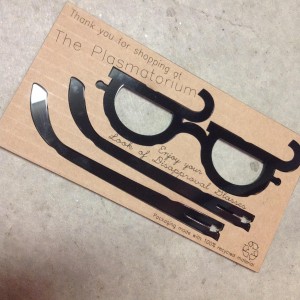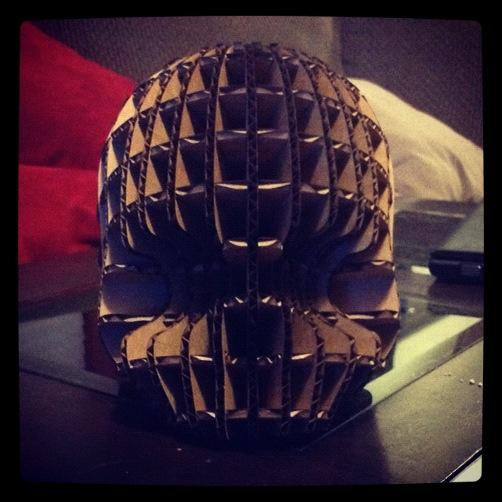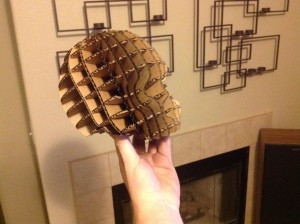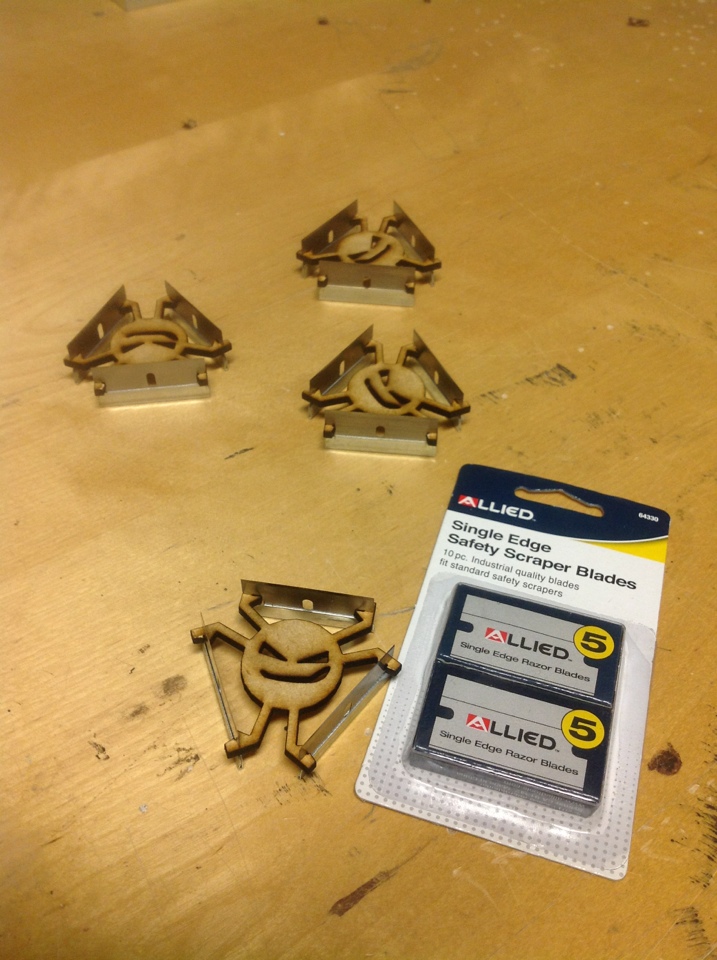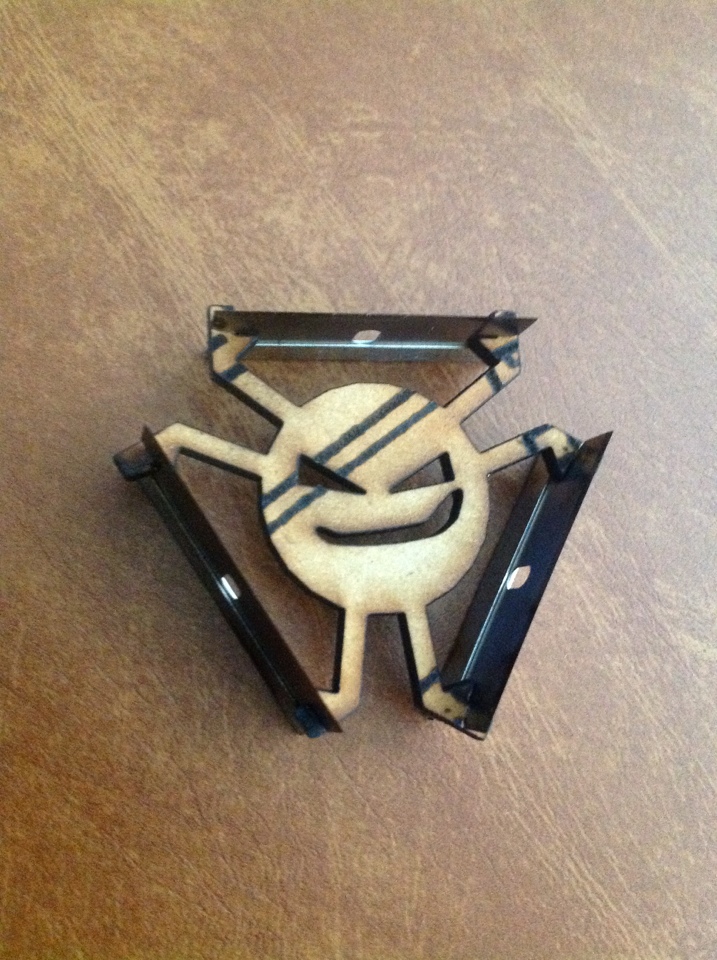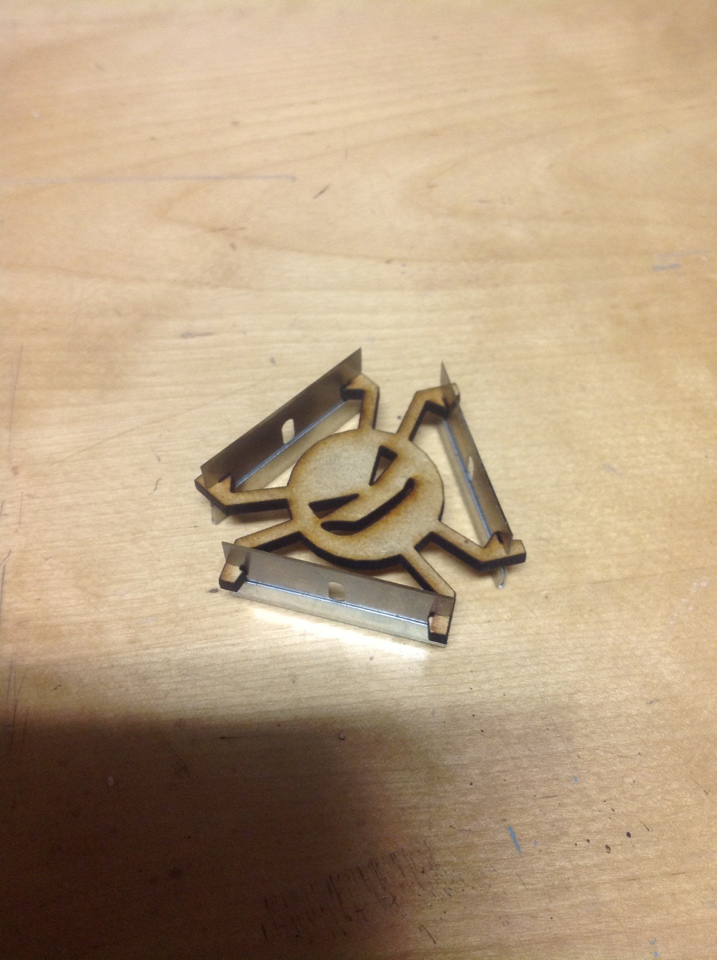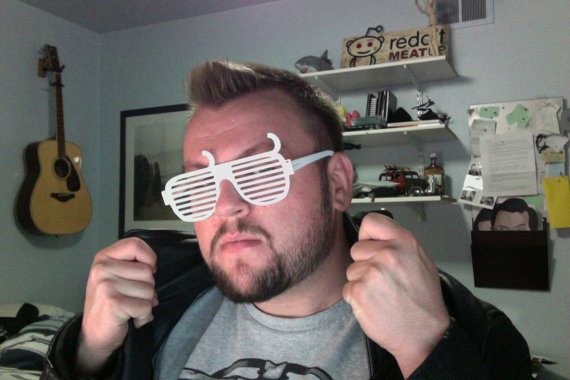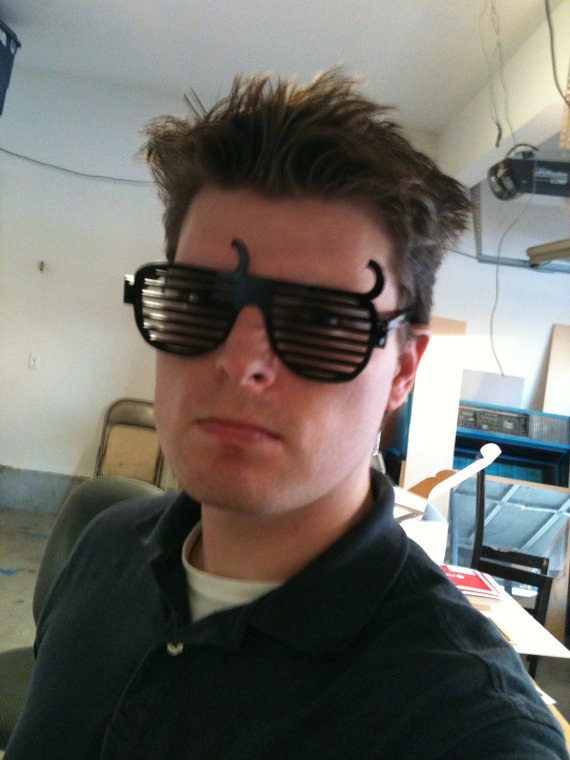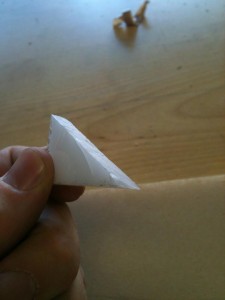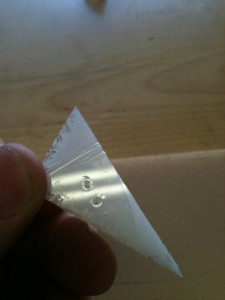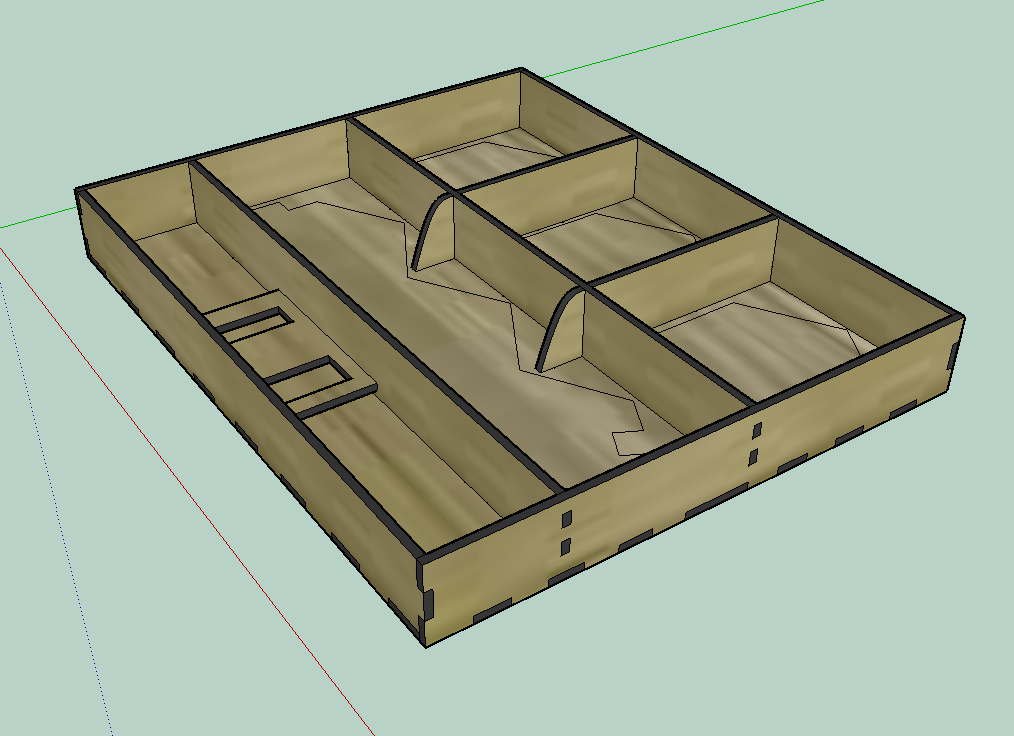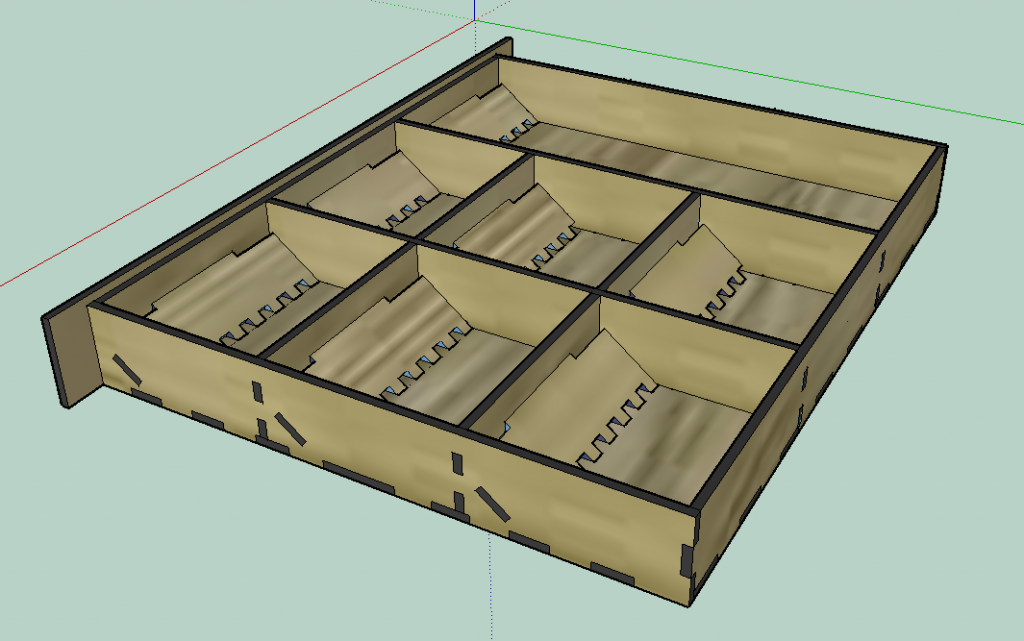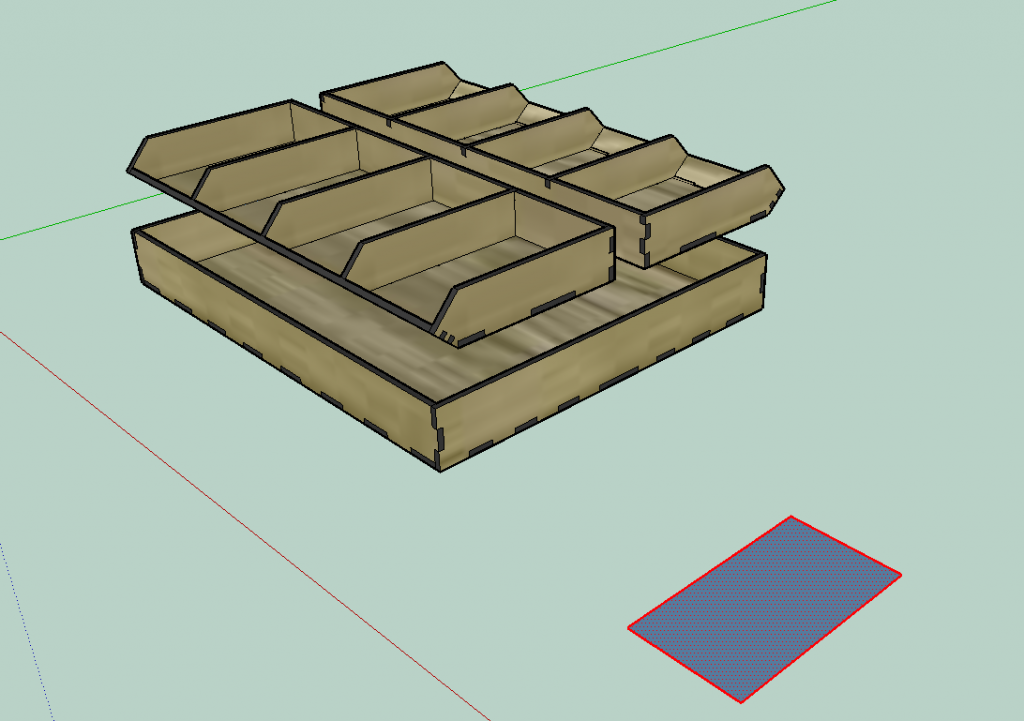While selling the Look of Disapproval Glasses, I have been having a couple recurring problems. One problem was the brittle nature of acrylic mixed with the man-handling nature of the post system causes a lot of broken sets and upset customers. Too frequently I was getting emails saying the glasses had arrived broken. I would of course replace them as soon as I had heard, but that left the original issue unresolved.
Another issue was that the 3-piece glasses set just doesn’t want to sit nicely in any way. Sure, you could just wrap them in a folded piece of paper, or tape them to something, but not only does that look just downright unprofessional, but it could cause damage of its own to the acrylic. Tape could leave glue on the plastic, making a marred product.
So I set out to fix the issue. What I finally came up with pretty much fixes both of these issues, and gives a tasteful touch to the out-of-box user experience as well.
The cardboard holder seen here has the same basic shape as the glasses parts, but with divots spread around, designed to grip the plastic. This holds them in the recesses, while still allowing them to be popped out with ease. The orientation of the corrugation in the cardboard is definitely taken into account. Having the corrugation go the same direction as the longest pieces reduces the chance of bending on the axis, which overall reduced the chance of the glasses breaking.
I also get a blank canvas to customize with my own messages, as you can see 🙂
If you’d like a pair of the glasses seen above, you can find them at The Plasmatorium
